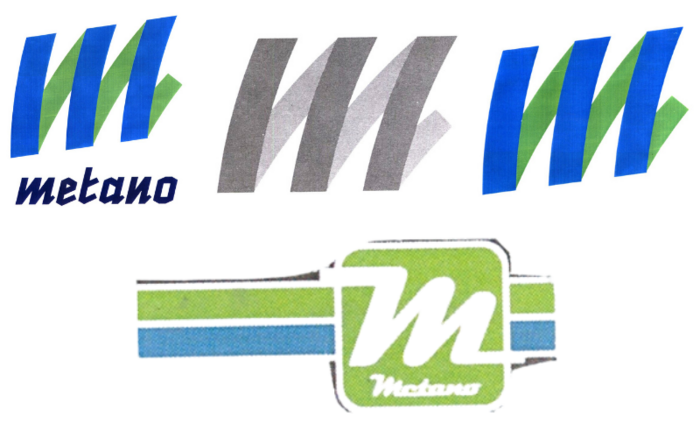
To win a war of words: data collection and evidentiary due diligence
On July 21, 1798, Napoleon withstood the Mameluke cavalry's impetuous charge by deploying his infantry into tight, disciplined squares at the Battle of the Pyramids. In so doing, he minimized French casualties and inflicted a crushing defeat on a numerically superior force, paving the way to Cairo and the eventual end of centuries of continuous Mamluk influence in Egypt.
Yet, despite their being bested on the battlefield, Napoleon engaged the vanquished Mamelukes as his guard and organized them into an elite cavalry squadron. Remarking on their martial prowess and organizational weakness, the French leader once said that "whereas one Mameluke was the equal of three Frenchmen, one hundred Frenchmen could confidently take on five times their number in Mamelukes."
This preamble serves to render in the imagination the principle that whereas a good, specialized lawyer is always vital to prevailing in legal action, the rearrangement of the individual pieces of evidence is often no less decisive than the arguments of law.
Preparation is half the battle
As our colleague Massimo Cimoli deftly examined in the white paper on the increasingly stringent limits imposed by the of Court Justice of the European Union (CJEU) on the new filing of identical (or near-identical) trademarks for the same goods and services, it is imperative for a company which derives significant value from its marks to maintain accurate and updated records of their use for evidentiary purposes.
A recent judgment from the CJEU on the case of the trademark "ZARA" for food-related products and services (Industria de Diseño Textil, SA (Inditex) vs. European Union Intellectual Property Office (EUIPO)) helped to clarify the standard of evidence deemed sufficient to prove genuine use. Crucially, the decision of the General Court issued on December 1, 2021, noted that "proof of use is not limited to documents which show the extent of use, but that it can also apply to documents relating to the place, duration and nature of use." The Court ascertained that genuine use of a prior mark had been proved and dismissed Inditex's appeal against the EUIPO's decision to refuse registration for Classes 29 to 32 and 35.
Beyond the provisions of this specific case, it is clear that if evidence of use is systematically and purposedly organized ahead of time, the scope for dogged opposition by a counterparty is dramatically reduced. In the dispute mentioned above between Inditex, a Spanish clothes company and owner of the world-famous ZARA brand, and an Italian food producer, Ffauf Italia, the legal back-and-forth lasted more than a decade, beginning in 2010. Taking steps to safeguard against prolonged and expensive legal actions in the first place is highly preferable to waiting for the outcome of procedures to recover costs.
We will look at some of the most pertinent issues to consider when collecting and maintaining sufficient proof of genuine use.
Everyday administrative steps
Firstly, invoices are the mainstay of trademark evidence, yet they do not always clearly demonstrate which products or services bearing a given trademark have actually been sold. It often happens that the associated trademarks do not appear on invoices, while product codes are not easy to identify with items as sold on the market.
If logos are always used in connection with product or service descriptions, it should be remembered that it is not unusual for them to fade from invoices. As such, appropriate care should be taken of physical copies and, ideally, digital backups should also be retained.
Other measures that can be taken to strengthen the evidentiary value of routine documents are to use a logo as a watermark for invoices and to store catalogs of product codes regularly. These simple procedures can be integrated into everyday practice without unduly impacting business-crucial operations such as accounting.
It is true that some judgments of the CJEU, such as that discussed above, have recognized that undated leaflets and brochures cannot be deprived of procedural relevance if they can be contextualized to a specific point in time. To illustrate this, the Court accepted two trade show documents produced by Ffauf Italia, noting that "even though they were not dated, the electronic version of Catalogue No 1 had been registered on 3 May 2010, that is to say, during the relevant period, and Catalogue No 2 contained a reference to an award received […] during that period." These period-specific proofs were deemed valid on account that "although the case-law requires a mark to be used publicly and outwardly, that obligation does not rest on each item of evidence capable of proving genuine use of the mark."

Businesses should ensure that their records adequately reflect the use of logos and other marks in connection with the sale of their products and services. This type of evidence can be critical in demonstrating not only use of a mark, but also the nature and extent of such use.
There are some additional factors to keep in mind regarding the presentation of brochures, leaflets and other ephemera as proof of trademark use.
To start, it is often in a company’s best interest not to display dates on perennial copy to limit reprinting costs and avoid the perception of being outdated. That said, it is relatively simple to demonstrate when specific promotional material was produced by requesting a declaration from the printing company to that effect. Therefore, partnering with a printer diligent in its bookkeeping and storing copies of all order forms, invoices and receipts can help mitigate this liability.
Additionally, participation in trade fairs and exhibitions is often published online and elsewhere, making it possible to trace presentations at these events. However, it is not always clear which products, and consequently, which trademarks, have been revealed to attendees and potential clients. For this reason, producing copy that makes reference to both a showcase and the trademarked products to be displayed there is wise.
Advertising often suffers from the same general problem in that retrieving a particular notice from a specific time can be difficult. Though it is rather easy to find an article from an archived journal or magazine in wide circulation, advertisements are not tracked in these databases, complicating matters. Most companies direct their advertising to specialized publications, targeting a narrow section of the public. Correspondingly, these outlets are typically limited in circulation and are not as likely to be preserved.
Lastly, although online material is relatively persistent, it may not always be decisive and referable to a specific point in time due to continual manipulation and a perfusion of hyperlinks.
Records of sales can offer more concrete, less impugnable proof of a trademark’s use, especially if these are carefully prepared with an eye toward this purpose. To this end, accounting departments could be instructed to prepare financial reports detailing product categories and the brands thereof for the IP department. These documents can then be stored for prompt use before the courts.
When conflicts arise
Though a CEO’s affidavit about sales is often determinant in litigation, it still needs to be complemented by substantive evidence. As such, the administrative practices described should not be overlooked.
From all we have described, a gradualist policy of collecting and organizing data on company trademarks can bear results in terms of:
- Proof of actual use of a trademark
- Proof of enhanced distinctiveness
- Proof of a trademark’s renown / market penetration
- Reduced litigation risks

Maintaining an up-to-date and accurate trademark registration portfolio requires regular monitoring. To ensure that your company's trademark rights are being adequately protected, consider working with a qualified trademark attorney.
Preserving data in this way services the courtroom and furnishes all company departments and business units with accurate information on trademark appearance, implementation and reach. Various business units can determine the relative effectiveness of past and current design or branding strategies from these internal records.
Dennemeyer & Associates helps clients globally to streamline their practices for the ongoing and systematic collection of trademark-use evidence. Properly assigned and stored, such proof would be invaluable to a good lawyer during litigation. In a war of words, preparedness is the key to victory.
A national example: Italy
The decision of the Italian Board of Appeal in case 39/22 of February 28, 2022, between Eni Gas e Luce and the Italian Patent and Trademark Office (UIBM) and HAM Italia S.r.l. has clarified how late or amended evidence is handled in infringement procedures.
The case began with an opposition from Eni to HAM's application for a trademark confusingly similar to one of Eni's prior registrations. Though the Opposition Division of the UIBM agreed that the application was indeed likely to cause confusion, Eni's request to prevent the registration of the conflicting "M" mark was denied on the grounds that the energy provider had not submitted convincing evidence of their earlier mark's genuine use.

Top: Eni's prior registration for methane gas. Bottom: The contested application from HAM for methane gas.
The Board of Appeal has since overturned the first instance's decision, recognizing that Eni satisfied the burden of proof with further evidence filed during the appellate proceeding. This ruling from the Board has far-reaching implications in that, firstly, it establishes that it is possible to provide new evidence in an appeal to bolster those proofs already supplied in the first instance.
The second ramification for Italian procedures relates to the Board of Appeal's reliance on determinations already reached by the Opposition Division. Having established that the new proofs filed by the opponent were sufficient, the Board promptly dismissed HAM's trademark application based on the Opposition Division's earlier finding of substantial similarity.
For more opinions from experts in Italian and European trademark law, contact the attorneys at Dennemeyer’s office in Rome.
Filed in

Developments in branding and new regulations are placing a multitude of demands on in-house lawyers.



